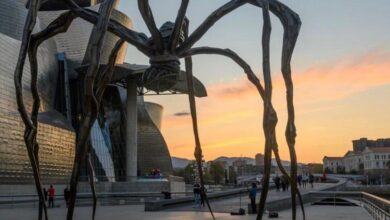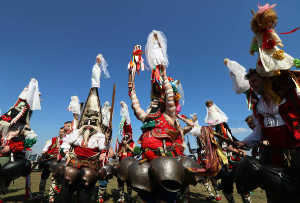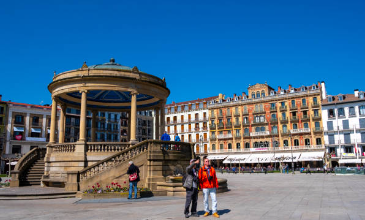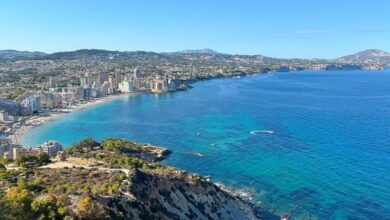
Province of Madrid: Spain’s Central Hub
The Province of Madrid, located in the heart of Spain, is one of the country’s most important regions, serving as a political, economic, and cultural powerhouse. While it is best known for being home to Madrid, the vibrant and bustling capital city, the province extends beyond the city limits, encompassing a diverse range of towns, historical sites, and natural landscapes.
Geography and Climate
The Province of Madrid covers an area of approximately 8,000 square kilometers. It is situated in the Meseta Central, a large plateau that dominates the geography of central Spain. The region’s terrain varies from the flat plains surrounding the city of Madrid to the mountainous areas of the Sierra de Guadarrama in the north. These mountains not only offer stunning natural scenery but also serve as a popular spot for hiking, skiing, and other outdoor activities.
The province enjoys a continental Mediterranean climate, characterized by hot summers and cold winters. Summer temperatures can reach up to 40°C (104°F), while winter temperatures, especially in the mountainous areas, can drop below freezing.
Cultural and Historical Significance
Madrid is a region steeped in history, from its Roman roots to its rise as the capital of Spain in the 16th century. The Habsburg and Bourbon monarchs left their mark on the province with grand palaces, churches, and public buildings that still stand today.
The influence of Spanish royalty is especially visible in landmarks such as the Royal Palace of Madrid, a symbol of the country’s royal history and grandeur. Outside the city, places like El Escorial and Aranjuez reveal further glimpses of the province’s regal past, with their impressive palaces, gardens, and monasteries.
Top Attractions in the Province of Madrid
- Royal Palace of Madrid: As one of the largest royal palaces in Europe, the Royal Palace is a major tourist attraction. Visitors can explore its opulent rooms, extensive art collections, and beautiful gardens.
- El Escorial: A UNESCO World Heritage Site, the Royal Monastery of San Lorenzo de El Escorial is a monumental complex that served as both a royal palace and a monastery. It is a masterpiece of Spanish Renaissance architecture and a must-see for history enthusiasts.
- Sierra de Guadarrama National Park: Nature lovers can explore the Sierra de Guadarrama, a mountain range north of Madrid that offers outdoor activities such as hiking, birdwatching, and skiing. The park is known for its scenic beauty and diverse wildlife.
- Alcalá de Henares: This historic town, another UNESCO World Heritage Site, is the birthplace of the famous writer Miguel de Cervantes, author of Don Quixote. Its well-preserved old town features historic university buildings and a rich cultural heritage.
- Aranjuez: Famous for its Royal Palace and sprawling gardens, Aranjuez is located along the Tagus River and offers visitors a peaceful retreat just south of the capital. It has been recognized as a UNESCO Cultural Landscape for its historical and architectural significance.
Culinary Delights
The cuisine of the Province of Madrid reflects its central location and traditional Spanish flavors. One of the most iconic dishes is cocido madrileño, a hearty stew made with chickpeas, meats, and vegetables, often served in three courses. The region is also famous for its callos a la madrileña (Madrid-style tripe) and rosquillas, a traditional doughnut-shaped pastry often enjoyed during festivals.
The province is also known for its vibrant tapas culture. In the city of Madrid and its surrounding towns, locals and visitors alike can enjoy a wide variety of small dishes, from jamón ibérico (Iberian ham) to patatas bravas (fried potatoes with a spicy sauce).
Festivals and Events
Madrid is home to numerous cultural and religious festivals throughout the year. San Isidro, celebrated in May, is one of the most famous festivals, honoring the patron saint of Madrid with parades, music, and traditional food. During the festival, locals dress in traditional costumes and enjoy the festive atmosphere across the province.
Another major event is the Fiestas de la Paloma in August, a lively street festival that fills the city with music, dancing, and celebrations. The province also hosts several bullfighting events, especially during the San Isidro festival, which draws visitors from all over the world.
Conclusion
The Province of Madrid is much more than just its capital city. From the historical towns of Alcalá de Henares and Aranjuez to the natural beauty of the Sierra de Guadarrama, this region offers a wealth of experiences for visitors. Its combination of rich history, vibrant culture, and stunning landscapes make it a top destination for those looking to explore central Spain. Whether you’re strolling through the streets of Madrid, discovering royal palaces, or enjoying the local cuisine, the Province of Madrid has something for everyone.








One Comment